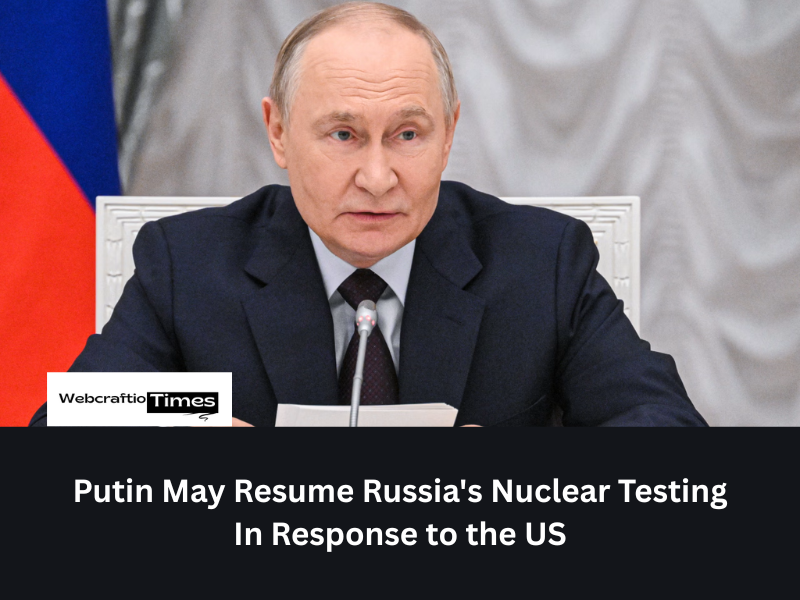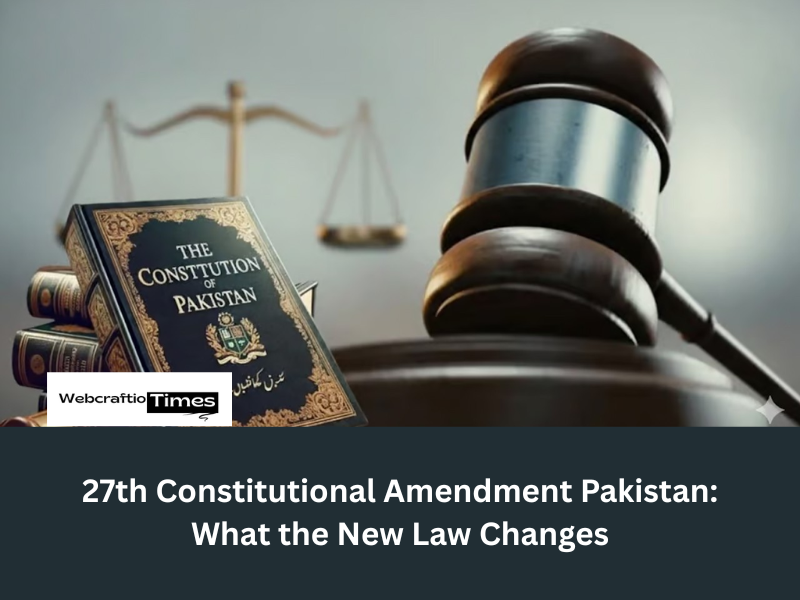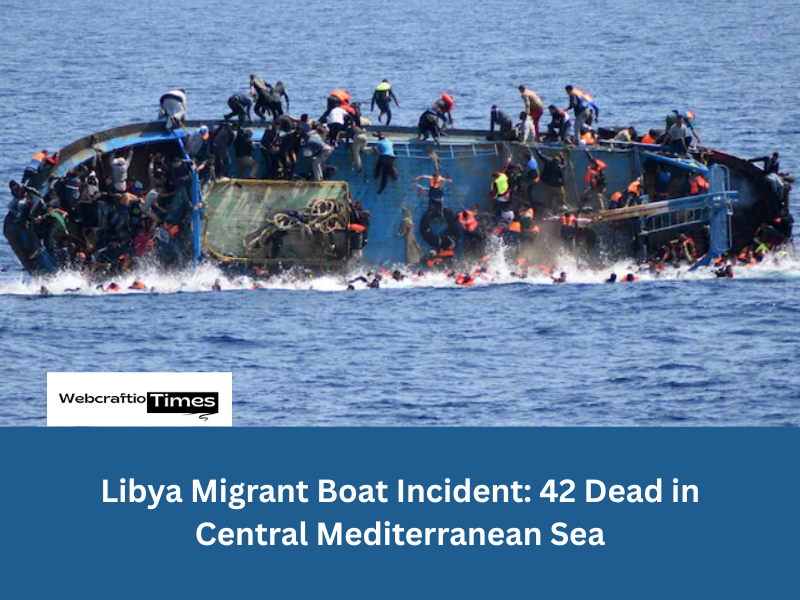Russian President Vladimir Putin has ordered top officials to submit proposals for the potential resumption of nuclear weapons testing. This directive represents a sharp escalation in geopolitical tension.
Putin’s move comes in direct response to recent ambiguous statements made by US President Donald Trump regarding the restart of American atomic tests. Moscow insists its action is a reciprocal measure. The possibility of Russia Nuclear Testing resuming shatters decades of global restraint, raising immediate fears of a new arms race among the world’s major powers.
Trump’s Uncertain Nuclear Remarks Acted As a Trigger
The dramatic Kremlin order follows an announcement from US President Donald Trump. On October 30, Trump directed the Pentagon to begin testing US nuclear weapons “on an equal basis” with Russia and China. This post on social media immediately created global confusion. Non-proliferation experts expressed deep concern.
They worried the US was preparing to conduct its first explosive nuclear test since 1992. Trump later doubled down on his claim. He insisted in a media interview that other nations, including Russia and China, were secretly conducting underground tests.
Read More: Trump’s Nuclear Testing Draws Reactions From Russia, China
The White House provided conflicting signals shortly after. US Energy Secretary Chris Wright later clarified the US position. Wright stated that any new tests would be “non-critical” system tests. He confirmed they would not involve full nuclear explosions.
Despite this clarification, Russia’s leadership treated the initial statements seriously. Deputy head of the Security Council, Dmitry Medvedev, posted on social media. He wrote that Russia must assess the expediency of conducting full-fledged nuclear tests itself.
The Opposite Order of the Kremlin
On Wednesday, November 5, President Putin chaired a meeting with his Security Council. He instructed the Defense Ministry and Foreign Ministry to analyze Washington’s intentions. Putin told them to prepare coordinated proposals for the possible start of work on preparations for nuclear weapons tests.
Crucially, Putin reiterated Moscow’s long-held position. Russia will only restart nuclear explosions if the United States does so first. Kremlin spokesman Dmitry Peskov emphasized the analysis phase. He confirmed Putin did not order the immediate start of preparations for nuclear tests. Instead, Moscow needs time to fully understand US intentions before making further decisions.

Defense Minister Andrei Belousov and Chief of the General Staff Valery Gerasimov spoke at the meeting. They both stressed the urgency of the situation. Belousov suggested immediately beginning preparations for full-scale nuclear tests. He pointed to the Arctic Novaya Zemlya archipelago. Belousov added that this former Soviet test site was ready for quickly resuming explosions. Gerasimov warned that Russia risked missing the time to respond promptly to US actions. Preparing for such tests takes months or even years. The military leaders clearly see an immediate need to prepare for a response.
The Geopolitical Stakes of Russia Nuclear Testing
The current crisis hinges upon the fate of the Comprehensive Nuclear Test Ban Treaty (CTBT). The CTBT, adopted in 1996, bans all nuclear test explosions globally. Every nuclear-armed state except North Korea has observed a de facto moratorium on explosive tests. However, the treaty has never officially entered into force.
This is because key countries have signed but not ratified it. The United States signed the CTBT but never ratified it. Russia, on the other hand, signed and ratified the treaty years ago.
In 2023, Putin signed a bill revoking Russia’s CTBT ratification. Moscow claimed the move was necessary to achieve parity with the US. The revocation gave Russia the legal freedom to resume testing at any time. Putin’s current order now operationalizes that freedom. It transforms a political statement into a formal military planning process.
The move by Russia places the entire global nuclear non-proliferation architecture under severe strain. Experts fear a domino effect. If Russia restarts explosive testing, other nuclear powers could feel compelled to follow suit. This would trigger a terrifying, uncontrolled new nuclear arms race.
A History of Escalation and Brinkmanship
This is not the first time this issue has surfaced. Even before Trump’s recent comments, tensions around nuclear testing were mounting. Satellite imagery has shown increased activity at test sites in both Russia and China.
The US Defense Intelligence Agency previously accused Russia of conducting supercritical nuclear tests. These tests arguably violate the CTBT’s “zero-yield” standard. Russia vehemently denies these accusations.
Only days before Trump’s announcement, Russia had announced successful tests of its new nuclear-capable weapons. These include the Burevestnik, a nuclear-powered cruise missile. They also tested the Poseidon, a massive nuclear-capable underwater drone. Putin hailed these systems as “impossible to intercept.” Analysts interpreted the timing of these tests as a direct message to Washington.
They suggest the move was designed to signal Russia’s firm stance on regional conflicts. Trump’s order to resume US testing then came immediately after. This suggests a classic tit-for-tat escalation cycle. Both sides use the threat of new nuclear capabilities to posture for geopolitical advantage.
Global Reaction and the Path Forward
The international community has reacted with profound alarm. Officials from other nations have urged both Washington and Moscow to exercise restraint. They stress the critical importance of maintaining the test moratorium. A return to explosive Russian nuclear Testing would undermine decades of hard-won international security efforts. It would also increase the risk of miscalculation.
The ball currently rests in Washington’s court. Moscow awaits a definitive, official explanation of US testing intentions. The Kremlin’s order for proposals gives Russia a prepared military option. It is a powerful form of deterrence. It warns the US against crossing the nuclear test threshold. The world watches anxiously as both powers navigate this dangerous moment.
Nuclear deterrence relies on clear communication and careful action. Ambiguous signals from either side only fuel the cycle of escalation. The coming weeks will determine whether global leaders can step back from the brink. The consequences of renewed Nuclear testing are far too severe for missteps. Russia has made its position clear. The next move by the US will dictate the immediate future of the global nuclear security landscape.
FAQs on Russia Nuclear Testing
- Q: Why has Putin ordered a review of Russia Nuclear Testing?
A: Putin’s order is a direct, reciprocal response to recent ambiguous statements from US President Donald Trump regarding the potential restart of US atomic weapons tests.
- Q: What is the main condition for Russia to resume explosive nuclear testing?
A: Russia has repeatedly stated it will only resume explosive nuclear testing if the United States conducts its own explosive nuclear test first, making Russia’s move a contingency plan.
- Q: Is Russia currently allowed to resume nuclear testing?
A: Yes. In 2023, Russia revoked its ratification of the Comprehensive Nuclear Test Ban Treaty (CTBT), giving it the legal freedom to resume testing whenever it chooses.
- Q: What specific action did Putin order the Russian ministries to take?
A: Putin ordered the Defense and Foreign Ministries to analyze Washington’s statements and prepare formal proposals for the possible start of preparatory work for future nuclear tests.
- Q: What is the potential global impact of Russia Nuclear Testing resuming?
A: Resuming Russia Nuclear Testing would shatter the decades-long global moratorium, likely triggering a dangerous, uncontrolled new nuclear arms race among the world’s nuclear powers.
For More Latest News & Updates: Visit Us



